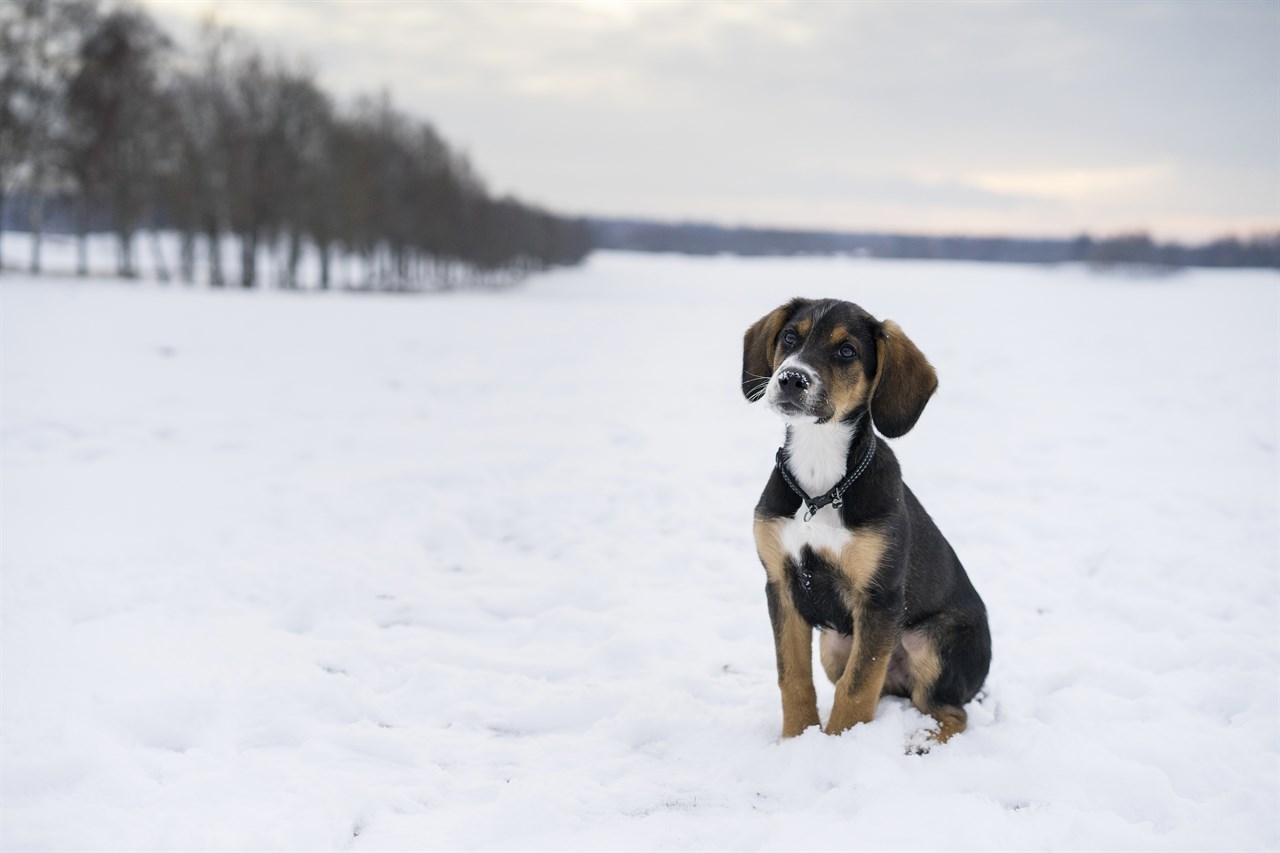The Harrier: Unravelling the Charms of This Energetic Hound

Dogs have been our loyal companions for centuries, fulfilling a variety of roles from hunting to guarding and providing endless love and affection. One such breed that has captured the hearts of many with its charm and energy is the Harrier. This breed, often described as a smaller cousin of the Beagle, has a rich history, unique characteristics, and an irresistible personality that make it a wonderful addition to any family. In this comprehensive long-form piece, we delve into the world of the Harrier to discover its origins, group classification, size, coat, colour, and overall appearance.
Breed History
The Harrier's history is shrouded in antiquity, and tracing its exact origins can be challenging. However, it is believed to have roots in medieval England, dating back to at least the 13th century. The breed was primarily developed to hunt hare, hence the name "Harrier." Harriers were expert scent hounds used by English hunters to track down and capture hares during organised hunts.
The Harrier shares its ancestry with several other hound breeds, including the Foxhound and the Basset Hound. These breeds contributed to the Harrier's distinctive traits, including its keen sense of smell, agility, and endurance. Over time, Harriers were refined and selectively bred to excel in hare hunting, becoming popular among English gentry and nobility.
During the 18th and 19th centuries, Harriers were imported to the United States, where they were employed for hunting foxes and other game. Their popularity grew, and the American Kennel Club (AKC) officially recognised the Harrier as a breed in 1885.
Also Known As
The Harrier is also sometimes referred to as a "Harehound." This name reflects its historical use in hunting hares, which is one of the breed's traditional roles.
Breed Group
The Harrier falls into the hound group, which is further subdivided into the scent hound category. Hounds are known for their acute sense of smell and their ability to track scents over long distances. This group includes various breeds, each with unique characteristics, but they all share a common history of being used for hunting.
Within the hound group, Harriers are classified as scent hounds, as they rely heavily on their extraordinary sense of smell to track game. This breed's keen olfactory abilities make them exceptional hunters, capable of following a scent trail for miles.
Breed Size
Harriers are considered a medium-sized breed, with a sturdy and well-proportioned build. Adult Harriers typically stand between 48 to 53 centimetres at the shoulder and weigh between 20 to 29 kilogrammes. Their size allows them to be agile and swift, essential traits for a hound bred for hunting in varied terrain.
Breed Coat
Harriers possess a short, dense, and glossy coat that lies close to their body. This coat type serves them well in the field, as it provides protection from thorns, underbrush, and the elements without impeding their movement. Their coat is easy to care for, requiring only occasional brushing to remove loose hair and maintain its sheen.
Colour and Appearance
Harriers exhibit a classic hound appearance, with a balanced and athletic build. Their expressive eyes are large, round, and typically brown, giving them an endearing and alert expression. Their ears are medium in length and hang close to their cheeks, framing their face. Their long, tapered tail is carried high, providing a distinctive silhouette.
One of the most notable features of the Harrier is its coat colour. Harriers can come in a variety of colour combinations, but the most common colours include:
- Tri-Colour: Harriers with tri-colour coats have a predominantly white base with black patches and tan markings on the face, legs, and ears. This classic hound colouration is often associated with the breed.
- Bi-Colour: Some Harriers have a bi-colour coat, which consists of a white base with black patches but lacks tan markings.
- Red and White: In addition to tri-colour and bi-colour variants, Harriers can also be found with red and white coats. These dogs have a white base with red markings.
- Lemon and White: Lemon and white Harriers have a white base with lemon-coloured markings, which are a lighter shade of tan.
- Sable and White: This less common colouration features a white base with sable or brown markings.
The variation in coat colour adds to the breed's overall charm and individuality, making each Harrier unique in appearance.
In conclusion, the Harrier is a breed steeped in history and purpose. Its origins as a skilled hare hunter in England have left an indelible mark on its personality and physical attributes. As a member of the hound group, it possesses the exceptional scent-tracking abilities that have made hounds invaluable to hunters for centuries. The Harrier's medium size, short coat, and distinctive tri-colour pattern contribute to its timeless and appealing appearance.
For those fortunate enough to share their lives with a Harrier, they will discover a loyal, affectionate, and high-energy companion who is equally at home in the field or as part of a loving family. Whether chasing scents in the great outdoors or curling up on the couch, the Harrier's unique blend of history, temperament, and physical characteristics make it a truly remarkable breed.
Continue reading our Harrier in-depth articles:
- Harrier Temperament and Behaviour
- Harrier Training and Socialisation
- Harrier Toilet Training
- Harrier Barking Habits
- Harrier Grooming Requirements
- Harrier Shedding Behaviour
- Harrier Sleeping Behaviour
- Harrier Diet and Feeding Requirements
- Harrier Average Lifespan
- Harrier Exercise Requirements
- Harrier Common Health Issues
- Harrier Suitability Guide
- Harrier Advantages
- Harrier Disadvantages
- Harrier Price to Buy and Own
- Harrier Clubs and Links
- Selling Harrier Puppy Litters and Dogs
- Buying Harrier Puppies and Dogs
- Harrier Alternatives